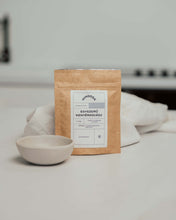You’ve just received a celiac disease diagnosis, and you don’t even know where to start in this new, unfamiliar, and intimidating situation. Many of us know this feeling well—it’s as if the whole world has shifted around us. Fortunately, the solution isn’t as complicated as it may seem at first. You only need to follow a few basic rules when setting up your new kitchen system to create the most comfortable gluten-free kitchen for yourself.
Assess the situation!
Before making any changes, carefully consider the circumstances. The most important question is whether only you, a family member, or your entire household will be eating gluten-free in the future.
If everyone switches to a gluten-free diet, your situation is much simpler because you only need to modify a few things once, and then just make sure that gluten-containing foods don’t enter your kitchen, or do so only under controlled conditions.
If only you are following the gluten-free diet, it’s a bit more complicated, but still manageable.
Tip: The easiest approach for everyone is to switch as fully as possible to gluten-free foods. This prevents dietary mistakes and reduces the need to constantly monitor for potential cross-contamination. Contrary to popular belief, a gluten-free diet can be planned so that non-dieting family members barely notice the difference. Some flexibility may be needed from them, for example with pasta dishes, but most meals can be prepared without gluten with little change in taste. Not to mention the many dishes that are naturally gluten-free!
By following the steps below, you can see everything you need to consider during this necessary, yet life-saving, kitchen redesign.
Fully Gluten-Free Kitchen
1. Ingredients
First, review all the foods you have at home and ruthlessly remove anything that contains gluten—though try not to throw food away; find someone who would enjoy the otherwise delicious items.
2. Cookware
You don’t need to buy everything new. Cookware and tools made from enamel or stainless steel can be thoroughly cleaned and scrubbed. Once spotless, they can be considered gluten-free.
Items that require caution or replacement:
- Non-stick pans, pancake pans – burnt-on residues on Teflon cannot be fully scrubbed off, and removing residue can damage the non-stick coating. Only perfectly clean pans should be used for gluten-free cooking.
- Plastic, scratched cookware – gluten can lodge in scratches and uneven surfaces, so it’s safer not to risk it.
- Wooden utensils – gluten sticks well to them; replacement is recommended. A cutting board used only for vegetables can remain.
- Bread maker, toaster, sandwich maker – usually need to be replaced.
- Storage containers for gluten-containing foods – if not easily cleanable (glass or porcelain), they should be replaced.
- Pasta strainer – traditional metal mesh is almost impossible to clean properly; a new one is preferable.
3. Kitchen furniture, fridge, microwave
No need to replace anything 😊. However, thorough cleaning is necessary, especially areas that frequently came into contact with gluten: bread baskets, flour shelves, sweets drawers, etc. After sorting cookware and utensils, clean everything very carefully so no gluten traces remain. Only then can gluten-free or newly purchased items return to the shelves.
Partially Gluten-Free Kitchen
If only 1–2 people in your household eat gluten-free, there are additional steps you’ll need to take. If gluten-containing dishes will still be prepared, you need to carefully consider how food preparation processes will work in your kitchen. If you have enough space, you can double everything—separate cabinets for gluten and non-gluten products and tools, and even divide the countertop according to this principle. In a smaller kitchen, stricter organization is required to prevent cross-contamination. For example:
- Designate a separate drawer or shelf for ingredients that need to be kept separate.
- Clearly mark utensils and cookware that are used exclusively for gluten-free cooking—insulating tape, permanent marker, or a different-colored/set of tools works well.
- If you’re cooking both types of meals, it’s a good idea to separate the processes in time at first.
- After preparing gluten-containing foods, wash thoroughly and clean all surfaces (stovetop, countertop, table)—you can safely use the dishwasher for mixed loads as well.
- In the fridge, have a separate shelf for gluten-free foods and always cover them.
- Over time, these practices will become routine, but until then, a kitchen journal can help you track when, what, and how you prepared food.
- Family members must be involved in the changes, even if they don’t cook! They need to know the new system, where things go, and what requires caution. During the learning phase, you can even label drawers and shelves.
Once you’ve done all this, you can proudly call yourself the owner of a fully gluten-free kitchen 😊. Congratulations!
In the next part of our series, you’ll also learn how to stock up on food supplies, strictly gluten-free.


